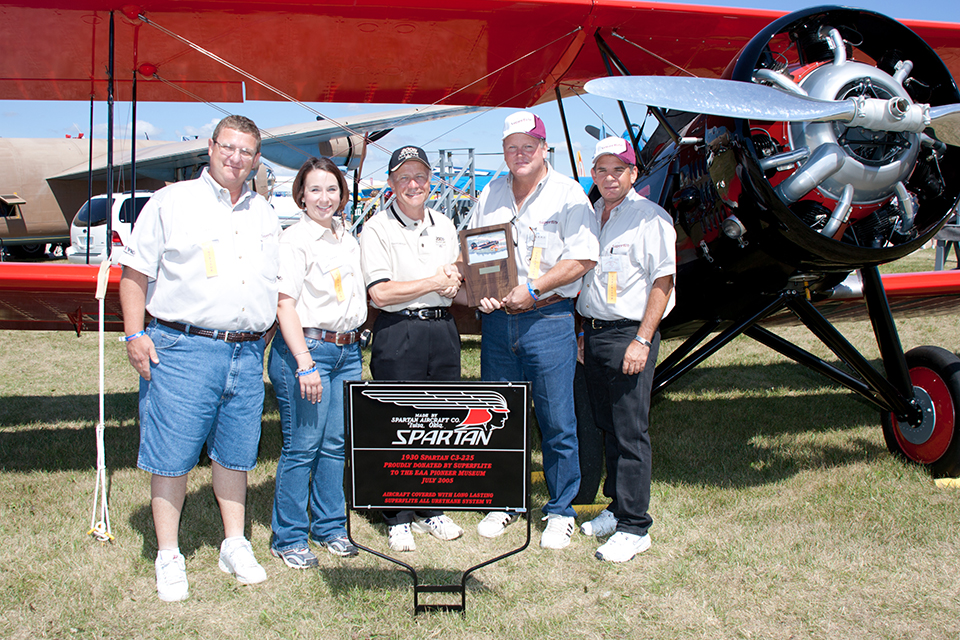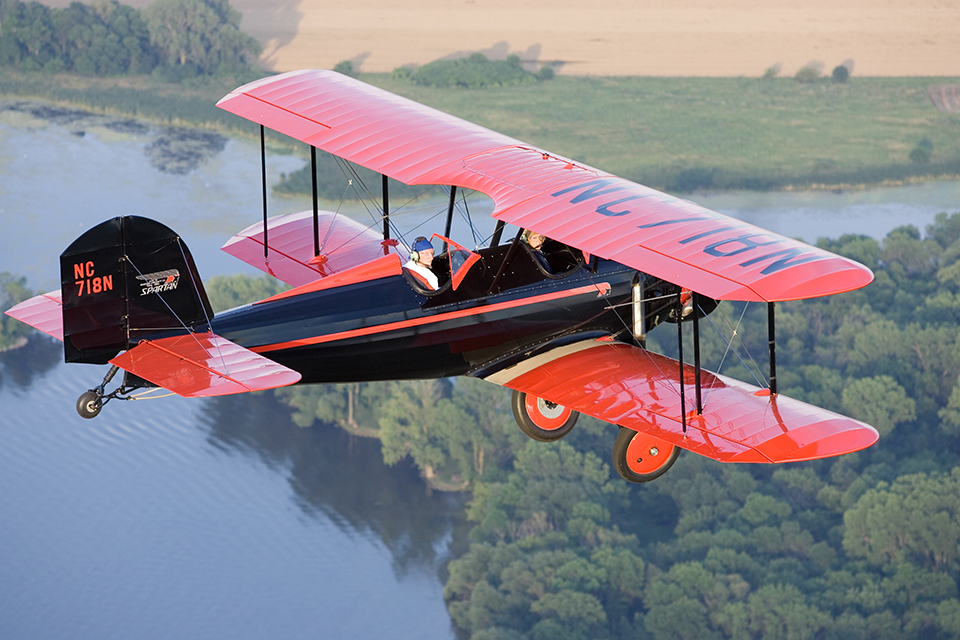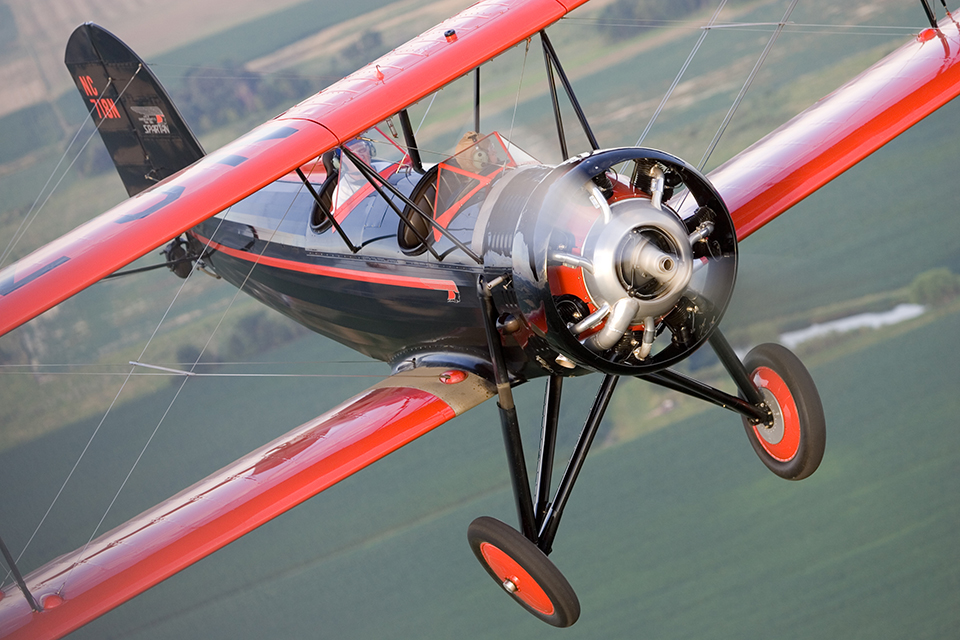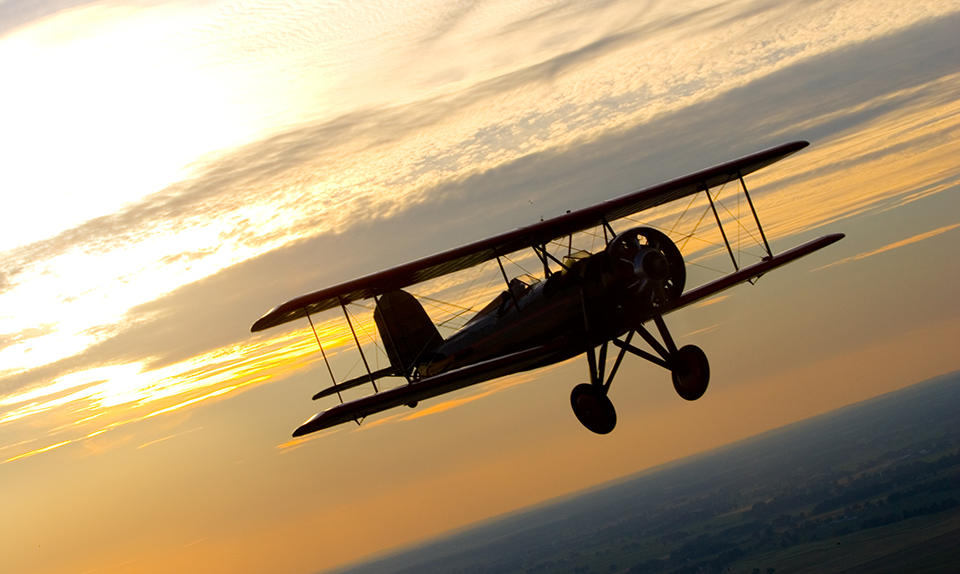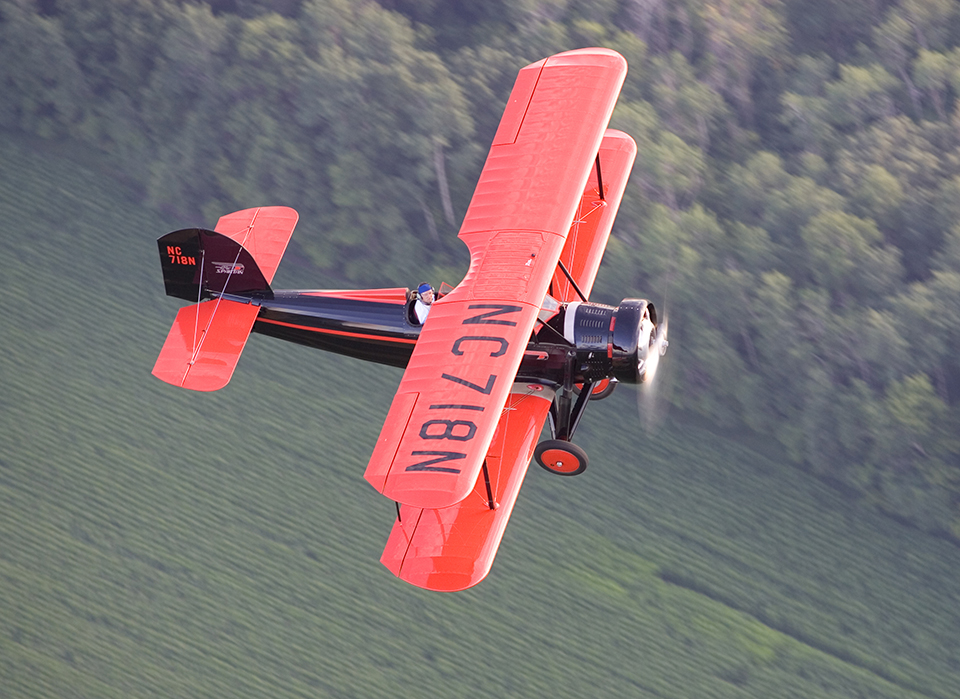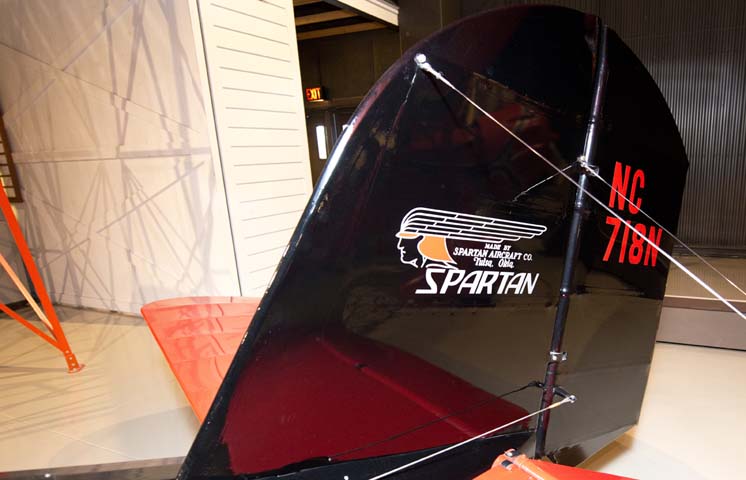1930 Spartan C3-225 - NC718N
Location: Antiques & Classics
Existing logbooks only go back to the third owner of our 1930 Spartan C3, NC718N, C.L. Sloan of Memphis, Texas, but we know from FAA records that the first owner of the airplane was the Haliburton Oil Well Cementing Co. of Duncan, Oklahoma, which purchased it July 26, 1930. Like many aircraft at that time, it was likely used to transport company officials between offices and job sites.
On December 8, 1934, Haliburton sold NC718N to Edward F. Booth, Inc., based at Love Field in Dallas, Texas. This was an aircraft dealership founded in 1932 by Army flyer “Doc” Booth that became Southwest Airmotive in 1940 and is now Aviall, Inc., a Boeing subsidiary. It was six months later, on June 22, 1935, that Sloan acquired the Spartan. In August of that year he flew NC718N to Denver, Colorado, where Western Flying Service performed some maintenance work before he returned to Texas 20 days later.
It was overhauled by Spartan in January 1936 and by March of that year was back in the ownership of Spartan, but this time at the Spartan School of Aeronautics. Two months later it belonged to the Oklahoma Military Academy in Claremore, Oklahoma. Most of the flying there seems to have been done by a J.L. Fletcher.
The next owner, John J. Armbruster, kept NC718N in Claremore at Will Rogers Airport when he bought it June 14, 1940, through his company, Union Cotton Oil Co. of Prague, Oklahoma. But it moved almost immediately on July 18, 1940, when it was sold to Burnham and Miller Flying Service in Omaha, Nebraska, where the flying was done by L.D. Miller.
The Spartan stayed in Omaha when it was sold May 1, 1942, to James A. Davis and Oliver V. Tyler, Jr. Burnham-Miller Flying Service continued to hold a mortgage on it during this time. On October 6, James A. Davis became the sole owner and the plane was transferred that same day back to Burnham-Miller Flying Service. Davis obviously had some connection to Burnham-Miller but whether it was as an employee or an owner isn’t clear. The logs do show that he continued to initial the daily inspection reports through March of 1944.
Early in its time at Omaha the Spartan helped in the war effort as there are entries where the nature of flight is noted as CPT (civilian pilot training). These flights were piloted by a W.B., possibly the Burnham of Burnham and Miller.
The log adds some mystery to the story here as there is a note across one page reading “Bought Plane from Burnham & Miller 6-2-43 — Total Time 1909:50” and the initials of James A. Davis reappear. This transaction doesn’t show in the paperwork, so possibly Burnham and Miller retained ownership while Davis paid for the plane.
Thomas Doryland, Carl E. Bishop, and Tasker B. Sherill in Lincoln, Nebraska, became co-owners on March 8, 1944. Two months later on June 21, Doryland became the sole owner. In 1948, he had the Spartan modified for banner towing. He towed banners near Lincoln on 10 occasions before flying the aircraft for the last time in May 1953.
Sometime later the Spartan was disassembled and stored in a barn where it resided for 49 years until 2002.
That was when J. Patrick McNamara of Superflite Aircraft Covering and Finishing Systems in Granite City, Illinois, purchased NC718N at an auction held by Starman Bros. Auctions of Papillion, Nebraska. Superflite, which has been in the aircraft finishing business since 1949, was looking for a project to showcase their products and methods. McNamara thought the vintage biplane would be a perfect canvas.
Randy Long of Long’s Aircraft Service in Coleman, Texas, was contracted to do the restoration. With the help of Jay Dalton and Corey Townson he completed the ground-up restoration between November 2003 and July 2004. During the process, Coker Tire Co. manufactured the 30-by-5-inch smooth tread tires, Keystone Instruments, Inc. re-certified all the instruments, Holloway overhauled the original engine, Steen Aero Labs provided new flying and landing wires, and San Antonio Propeller overhauled the propeller. The banner towing equipment was removed. The fuselage was sandblasted and epoxy coated. All the wood was stained and varnished. New cables, hardware, glass, and hoses were used and a new stainless steel firewall was fabricated.
The fuselage had last been recovered in 1936 by Spartan using Grade A cotton and dope, and the horizontal stabilizers and elevators were again recovered in 1947. All this was replaced by Dacron fabric finished using Superflite’s System VI urethane covering system.
The result was impressive enough for the Spartan to garner a Silver Age Champion Lindy Award at AirVenture 2004. In September 2005, Superflite donated NC718N to the EAA AirVenture Museum.
Length: 23 feet, 2 inchesWingspan: 32 feet
Height: 8 feet, 10 inches
Empty Weight: 1,741 pounds
Gross Weight: 2,700 pounds
Cruise Speed: 110 mph
Maximum Speed: 133 mph
Range: 460 miles
Crew: 3
Powerplant: Wright R-760 (J-6-7) Whirlwind Seven
Horsepower: 225 hp
